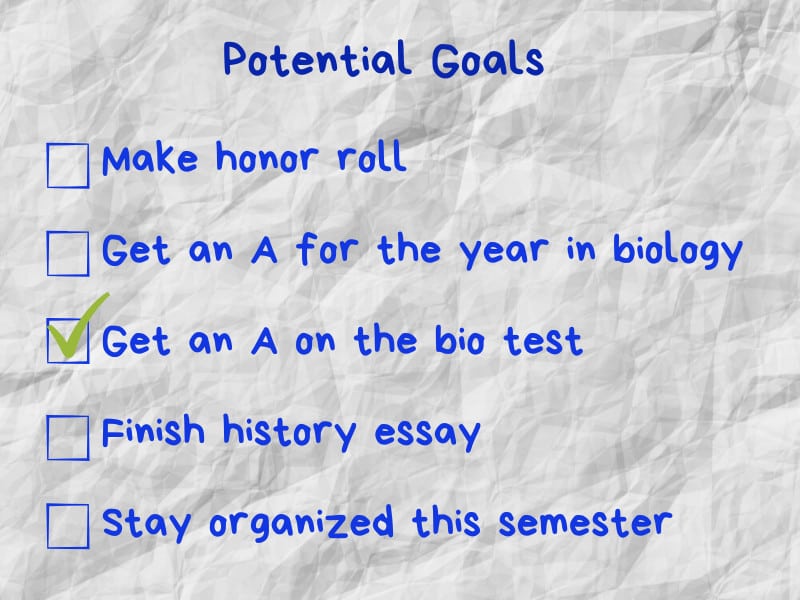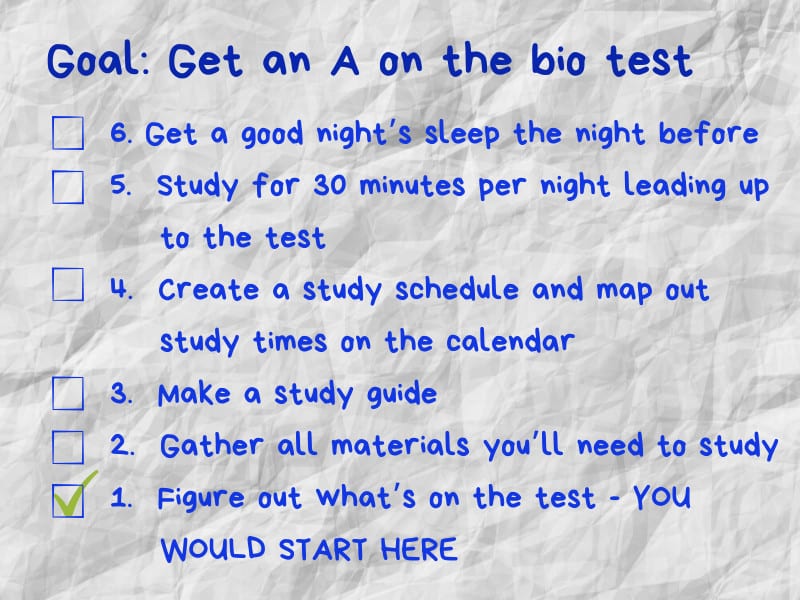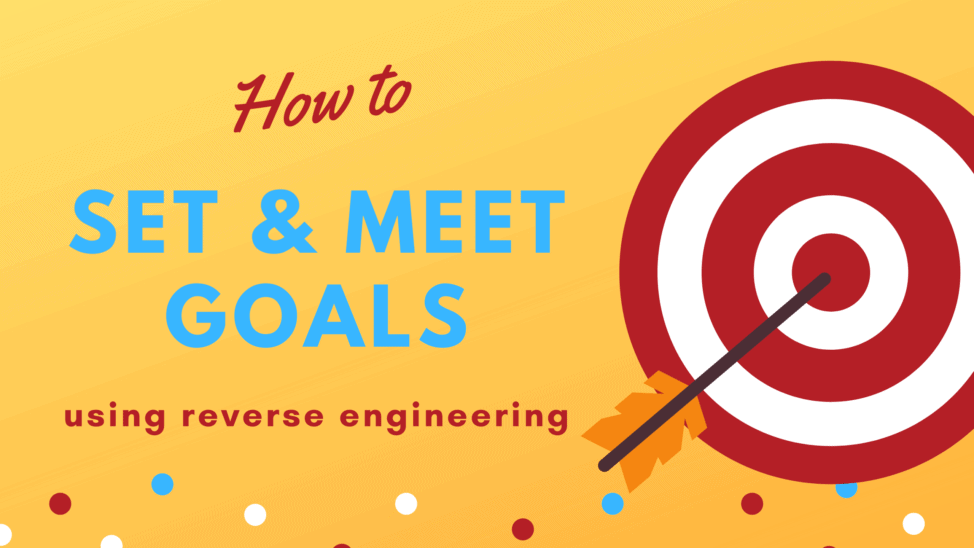By Katie Azevedo, M.Ed.

If you’re already getting the grades you want, then you likely already know how to set goals and meet them. Good job.
If you are not happy with your grades or with how you (don’t) accomplish things in general, then it’s likely you need to work on goal-setting.
This is going to be a post about how to set and meet academic goals through the process of reverse engineering, although the strategies and tips certainly apply to other contexts as well. Basically, if you can figure out how to reverse-engineer academic goals, you can make it happen in other areas of your life — including when you want to reach professional and personal goals as well.
The best advice I have about goal-setting is this:
It’s not HAVING a goal that will help you meet it. It’s the PROCESS and SYSTEM you follow that will help you meet it.
If you set a terrific goal, you will never reach it without identifying exactly what steps you need to follow to get there. That’s where reverse engineering comes in. The process of reverse engineering is critical to getting to the end zone.
I work with students alllllllllll dayyyyyyyyyyyy longgggggggg who tell me they “want an A” or they “can’t fail bio” or they “want to stay organized for once.” But then they do nothing to make these goals happen! (Lol, that’s my cue to enter.)
Seriously though – these students are frustrated because in their minds they have set a goal – “I want an A” – and they can’t understand why they’re not reaching it. The truth? They’re not reaching it because they are flat out not taking steps towards it. Or, they are taking the wrong steps. Sounds so simple, yes, but at the same time, this realization can be mind-blowing to some.
The solution? Use reverse engineering to determine the exact steps to reach the goal.
How to set goals and meet them, using reverse engineering
1. Identify what’s worth having as a goal. Focus on one at a time. To do this:
- Write a list of the top five things you want to change or accomplish.
- From this list, circle the one that will have the greatest impact on your life. This should be your primary goal. Start here.
- Keep the paper for future reference, as you can come back to the remaining four goals later.

2. Reverse engineer your goal by breaking down the goal into individual steps, working backward. Here’s what that could look like:

3. Break down any steps that are longer than 30 minutes into smaller chunks. For example, you could break down step 3 into 2 30-minute sessions if needed. More on how to break down steps into smaller chunks here.
4. Motivate yourself along the way. Some of us are intrinsically motivated (we just internally want.to.do.the.things), while others need external motivation. Know yourself – and if you need external motivation, give yourself some treats as you complete each step towards your goal. There’s nothing wrong with doing this.
Again — and this is worth repeating — you will reach your goal if you follow the right process. You will reach your goal if you have the right system. But in order to have the right process and systems in place, you have to reverse-engineer from your goal to where you currently are, wherever that is.
Here are 8 more practical goal-setting strategies for students. Also, one of my favorite productivity gurus is James Clear. You can read his take on goal-setting vs. systems in this article here.


